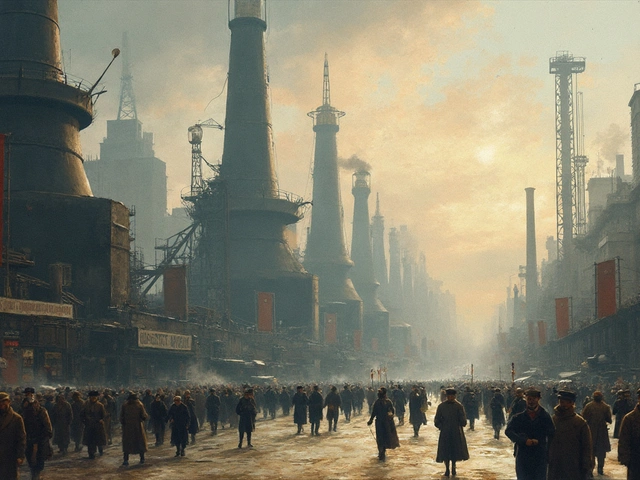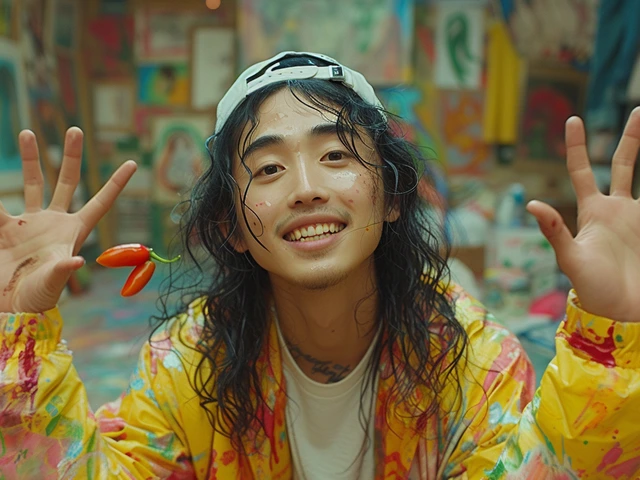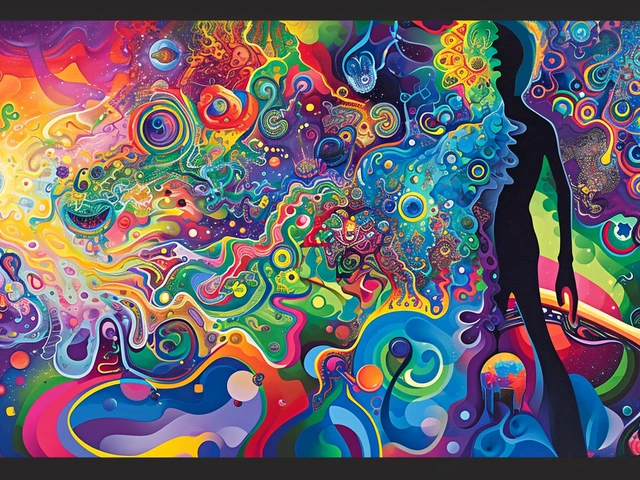Street art has become a vibrant canvas for creativity, social commentary, and cultural expression, transforming mundane urban landscapes into open-air galleries. From Banksy's mysterious installations to Keith Haring's bold murals, these iconic pieces have sparked conversations and stirred emotions around the world.
Each stroke of paint and every spray of color tells a compelling story, often reflective of the artist's message or the cultural pulse at the time. This artistic movement has not only flourished in bustling metropolises but has also found its way into unexpected corners, making art accessible to all.
- Historical Street Art Icons
- Profiles of Renowned Street Artists
- Cultural Impact and Interpretations
- How to Find and Appreciate Street Art
Historical Street Art Icons
Street art, with its roots deeply embedded in the counterculture of the late 20th century, has evolved from mere acts of rebellious expression to celebrated artistic milestones. One of the earliest and most recognizable icons of modern street art is Keith Haring. Haring's vibrant and animated murals adorned subways and vacant walls in 1980s New York, turning mundane cityscapes into dynamic canvases of social themes. His playful characters and bold lines weren't just art for art’s sake—they carried messages against apartheid, highlighting AIDS awareness, and promoting love and unity.
Another monumental figure is Jean-Michel Basquiat, who began as a graffiti artist under the pseudonym SAMO. Basquiat's graffiti was cryptic yet powerful, exuding raw energy and reflecting the socio-political environment of Lower Manhattan. His transition from street artist to a world-renowned painter showcased the potential of street art as a legitimate and influential art form. Basquiat's works are housed in major museums today, proving that street art isn't confined to the alleys but can be a part of mainstream art culture as well.
London's Banksy is a conundrum—known for his anonymity and provocative stencils that often appear overnight without warning. Banksy's works like 'Girl With Balloon' and 'There Is Always Hope' are poignant, simple, yet deeply resonant. The public revelation of each new Banksy piece turns into an event, with people flocking to see his commentary on war, capitalism, and social issues. His 2015 creation, Dismaland, an anti-theme park, is a striking critique of consumer culture, blending street art with immersive installation art.
On the other side of the Atlantic, the murals of Diego Rivera in Mexico offer another historical perspective. Rivera used the city walls to narrate the struggles and triumphs of the Mexican people. His works are detailed and sprawling, often covering entire buildings. The murals are not just visually striking; they are historical documentation, depicting Mexico’s socio-political evolution.
“Art is not a mirror held up to reality, but a hammer with which to shape it.” —Bertolt Brecht
The cultural significance of these historical street art pieces goes beyond aesthetics. They are echoes of the era they were created in, capturing public dissent, joy, sorrow, and every shade of human existence in between. They don't just decorate the cities—they breathe life into them.
Profiles of Renowned Street Artists
Street art has seen figures rise whose work transcends walls and alleys to become symbols of larger social and political movements. The names behind these vibrant and powerful pieces are as compelling as the art itself. Let's dive into the lives and legacies of some of the most influential street artists.
1. Banksy
Possibly the most enigmatic artist of our time, Banksy is both a mystery and a miracle within the street art community. Originating from Bristol, England, his works are known for their sharp wit and social criticism wrapped in a cloak of anonymity. One of his most famous pieces, “Girl with Balloon,” even self-destructed in a surprising twist during a Sotheby’s auction in 2018. Banksy’s artwork has a unique approach, often combining humor with a hard-hitting message that speaks directly to the viewer.
“People say graffiti is ugly, irresponsible and childish... but that's only if it's done properly.” – Banksy
His artwork spans various themes such as anti-war sentiments, critiques of consumerism, and reflections on existential dread. Despite numerous attempts to reveal his identity, Banksy remains anonymous, adding to the allure and intrigue surrounding his work.
2. Keith Haring
Keith Haring brought a vibrant, playful energy to street art in the 1980s. His bold lines, bright colors, and recurring motifs like dancing figures and radiant babies became not just art, but a movement. Starting his career in New York City’s subways, Haring used public spaces as his canvas to make art accessible to everyone. He quickly gained fame, yet his work remained deeply rooted in social activism, addressing issues like AIDS awareness and apartheid.
Before his untimely death in 1990, Haring opened the Pop Shop, a Montre-style store selling his more affordable pieces, proving that art didn’t have to be exclusive. His legacy continues through the Keith Haring Foundation, which supports organizations fighting for causes he believed in.
3. Jean-Michel Basquiat
Jean-Michel Basquiat was another key figure in the world of street art, whose influence extended beyond the streets into the elite art galleries. Starting out as part of the graffiti duo SAMO, Basquiat used cryptic messages and striking visuals to capture the essence of urban life and struggle. His work often tackled complex issues of race, power, and identity, layered with an abstracted yet visceral style.
Basquiat's rise from a street artist to an art world sensation marked a significant shift in how street art was perceived. He was an immigrant's son who showcased raw, unfiltered talent, breaking barriers and challenging norms within the art community. Though his life was tragically short, his work remains a testament to the power of street art as a medium for profound self-expression and social commentary.
4. Shepard Fairey
Shepard Fairey is perhaps best known for his “Obey Giant” campaign and the iconic “HOPE” poster of Barack Obama. Starting with stickers and posters in the 1980s, Fairey’s work seamlessly blends graphic design with street art. His style is instantly recognizable for its use of bold colors, propaganda aesthetics, and politically charged messages. His work challenges viewers to question authority, conformism, and consumerism.
Fairey’s ability to bridge commercial art and guerrilla art has made him one of the most influential figures in contemporary street art. He continues to produce powerful artwork, sparking dialogues about politics and social justice, pushing the boundaries of what street art can achieve.
Cultural Impact and Interpretations
Street art is more than just vivid imagery splashed across city walls—it is a vibrant form of cultural expression and social commentary. Over the years, iconic pieces of street art have not only decorated urban spaces but have also sparked conversations about important societal issues. This medium provides a unique platform for artists to voice their opinions and reflect community sentiments.
One of the most profound impacts of street art is its ability to bring attention to political and social issues. For instance, Banksy's well-known piece titled 'Girl with a Balloon' has become a symbol of hope and defiance. Its simplicity and emotional depth resonate with viewers, encouraging them to engage in discussions about broader global issues. Street art often serves as an accessible entry point for people to engage with complex topics that they might otherwise overlook.
A striking example of social commentary through street art can be found in the works of Shepard Fairey. His 'Hope' poster featuring Barack Obama during the 2008 U.S. presidential campaign is a classic example. This piece transcended its role as street art, becoming a symbol of optimism and change. It demonstrates how street art can bridge the gap between politics and the public, offering a visual language that is both compelling and relatable.
Street art also contributes significantly to the identity and character of neighborhoods. In cities like Berlin, London, and New York, entire districts are known for their rich tapestry of murals and graffiti, attracting tourists and art enthusiasts alike. This influx not only boosts local economies but also fosters a sense of pride and community among residents. The colorful streets of neighborhoods like Berlin’s Kreuzberg or London’s Shoreditch have become cultural landmarks in their own right, celebrated for their unique artistic heritage.
Moreover, street art has played a pivotal role in reclaiming public spaces. Artists often transform neglected and rundown areas into vibrant hubs of creativity, inviting people to see their environments with new eyes. Murals such as 'Urban Nation' in Berlin are perfect examples of how art can rejuvenate urban landscapes and create a stronger sense of ownership among local communities.
Interpretations of street art can vary widely depending on cultural context and personal perspectives. What might be seen as an act of rebellion in one place could be considered a celebration of culture in another. The beauty of street art lies in its subjectivity and the invitation for viewers to derive their own meanings. As Salvador Dalí once said, "A true artist is not one who is inspired, but one who inspires others." This sentiment can be seen in the ever-evolving and diverse world of street art, where every piece has the potential to inspire and provoke thought.
The cultural impact of street art extends beyond visual aesthetics; it shapes conversations and influences cultural narratives. By challenging traditional notions of art and its place in society, street art continues to be a dynamic force in the world of artistic expression.
How to Find and Appreciate Street Art
Finding street art can be an exhilarating adventure, transforming a simple city walk into a treasure hunt. One of the best ways to start is by exploring vibrant neighborhoods known for their creative atmosphere. Areas like Shoreditch in London, Wynwood Walls in Miami, or Le Mur in Paris are renowned for their astonishing street art displays. Strolling through these districts, keeping an eye on walls, alleys, and unexpected spaces, often reveals hidden gems.
Street art tours can be incredibly helpful in uncovering the fascinating stories, techniques, and messages behind the murals. Many cities offer guided tours led by knowledgeable art enthusiasts who provide insight into the pieces' significance and the artists' intentions. Apps and online platforms such as Google’s Street Art Project also allow art fans to discover street art from all around the globe right from their devices.
While exploring, it's valuable to understand the diverse styles and techniques street artists employ. From large-scale murals to intricate stencils and vibrant graffiti, each piece can be unique. Recognizing the different methods like wheat pasting, spray painting, or sticker art can deepen appreciation. Observing the context, such as the building's architecture or the neighborhood's history, also enriches the viewing experience.
Respect and etiquette are crucial when enjoying street art. It’s essential to appreciate these works without defacing them. Taking photos is generally acceptable, and sharing them on social media can promote the artists. However, always credit the artist if their name is available. Remember, these artworks might be ephemeral due to urban development or weathering; capturing them preserves their memory.
“Street art is a visual diary of our cultural history. Each piece tells a story about society at a particular point in time,” says Pedro Alonzo, a curator specializing in street art.
For those looking to start creating their street art, it's important to begin legally. Many cities offer designated areas where artists can freely showcase their talent. Engaging with the local art community and participating in events can be an excellent way to learn and get inspired.
Lastly, following renowned street artists on social media platforms such as Instagram can help enthusiasts stay updated on new works and exhibitions. These accounts often share the stories behind the pieces, providing a deeper connection to the art. Street art festivals like Upfest in the UK or POW! WOW! in Hawaii gather artists from around the world and offer a chance to witness the creation process live.



